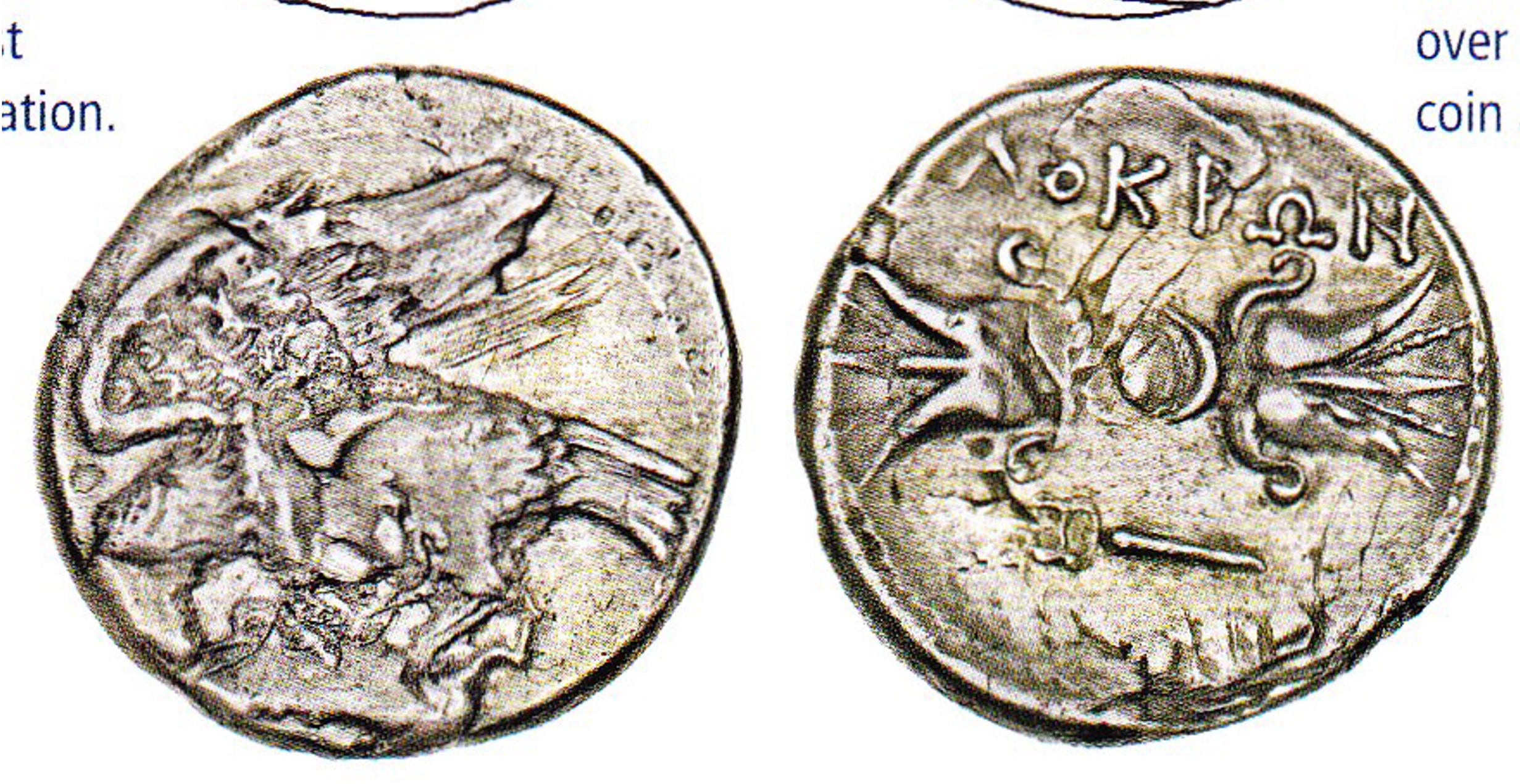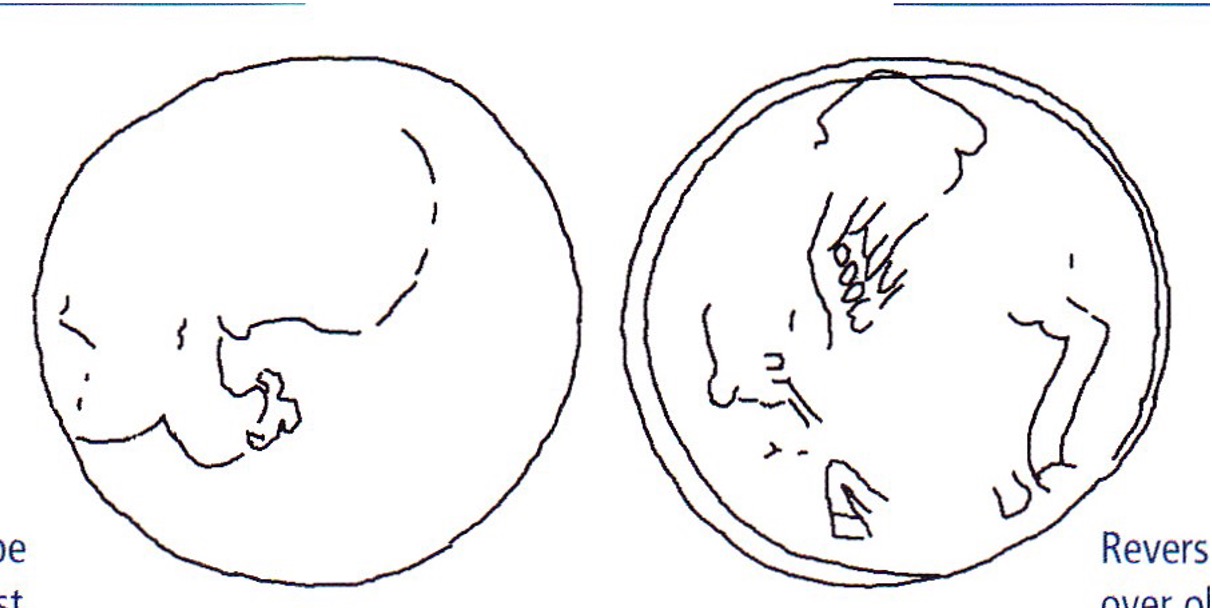2062 - Locri Epizephyrii (nomos Zeus/eagle) over Corinthian type (MacDonald coll., 29)
From SILVER
(CSV import-Overstrikes-2022-08-16) |
|||
| Line 1: | Line 1: | ||
{{Overstrike | {{Overstrike | ||
| + | |Image overstriking coin=SO 1409 - Locri Epizephyrii over uncertain mint.jpg | ||
| + | |Image overstruck variety visible on the overstriking coin=1409 Corinthian-type (drawing).jpg | ||
|Museum collection=Oxford, Ashmolean Museum | |Museum collection=Oxford, Ashmolean Museum | ||
| − | |Private collection= | + | |Private collection=David MacDonald collection |
|Obverse description=Eagle flying left, hare in talons. | |Obverse description=Eagle flying left, hare in talons. | ||
|Reverse legend=ΛΟΚΡΩΝ | |Reverse legend=ΛΟΚΡΩΝ | ||
| + | |Reverse legend language=Greek | ||
|Reverse description=Winged thunderbolt and caduceus. | |Reverse description=Winged thunderbolt and caduceus. | ||
|Mint=Locri Epizephyrii | |Mint=Locri Epizephyrii | ||
|Ancient region=Magna Graecia (Bruttium) | |Ancient region=Magna Graecia (Bruttium) | ||
| − | |Date from= | + | |Date from=400 BCE |
| − | |Date to= | + | |Date to=300 BCE |
| + | |Period=Classical | ||
| + | |Metal=Silver | ||
|Weight=7.48 | |Weight=7.48 | ||
| − | |Axis=8 | + | |Axis=8 |
|Denomination=didrachm / nomos | |Denomination=didrachm / nomos | ||
|Standard=Achaian | |Standard=Achaian | ||
| − | |Coin reference= | + | |Coin reference=MacDonald 2002, p. 64. ; MacDonald 2009, p. 41, no. 29. ; SNG, n° 1569 |
| − | |Coin series reference= | + | |Coin series reference=HN Italy, n° 2313-2317. ; HGC 1, n° 1566 |
| + | |Coin series web reference=https://greekcoinage.org/iris/id/locri_epizephyrii.hn_italy.2313-2318 | ||
|Overstruck obverse description=Pegasus flying left. Below, mint-mark (visible on reverse: part of wing, rear legs of Pegasus. Irrelevant flan lamination). | |Overstruck obverse description=Pegasus flying left. Below, mint-mark (visible on reverse: part of wing, rear legs of Pegasus. Irrelevant flan lamination). | ||
|Overstruck reverse description=Head of Aphrodite left, weraing Corinthian helmet. Behind, probably symbol (visible on obverse: outline of helmet, tail of helmet, and locks of hair, slightly double-struck). | |Overstruck reverse description=Head of Aphrodite left, weraing Corinthian helmet. Behind, probably symbol (visible on obverse: outline of helmet, tail of helmet, and locks of hair, slightly double-struck). | ||
Revision as of 16:08, 16 June 2023
400 BCE - 300 BCE | ΛΟΚΡΩΝ
Location/history
| Museum collectionMuseum collection: | Oxford, Ashmolean Museum | |
| Private collection(s)Private collection(s) ᵖ: | David MacDonald collection |
Overstriking coin
Description
| ObverseInscription or printing placed on the obverse.: | Eagle flying left, hare in talons. | ReverseInscription or printing placed on the reverse.: | ΛΟΚΡΩΝ (Greek) Winged thunderbolt and caduceus. |
Mint and issuing power
| MintIdentifies the place of manufacture or issue of a numismatic object.: | Locri Epizephyrii | Ancient regionAncient region. | Magna Graecia (Bruttium) | Modern countryModern country: Italy | AuthorityIdentifies the issuing power. The authority can be "pretended" when the name or the portrait of X is on the coin but he/she was not the issuing power. It can also be "uncertain" when there is no mention of X on the coin but he/she was the issuing power according to the historical sources: |
Chronology
| FromIdentifies the initial date in a range assigned in a numismatic context. 400 BCE toIdentifies the final date in a range assigned in a numismatic context.. 300 BCE | Classical 480-323 BC |
Physical description
| MetalThe physical material (usually metal) from which an object is made.: Silver |
WeightWeight of the numismatic object (in grams). in grams: 7.487.48 g <br />7,480 mg <br /> | DenominationTerm indicating the value of a numismatic object. Examples: tetradrachm, chalkous, denarius.: didrachm / nomos |
AxisDescribes the directional relationship between the obverse and reverse of a numismatic object.: 88 mm <br />0.8 cm <br /> |
| StandardStandard.: Achaian | |||
References
| Coin referenceReference of the Coin: | MacDonald 2002, p. 64., MacDonald 2009, p. 41, no. 29., SNG, n° 1569 | Coin series referenceReference to coin series study: | HN Italy1HN Italy, n° 2313-2317., HGC 12HGC 1, n° 1566 |
| Coin series web referenceCoin series web references: | |||
Overstruck type
Description
| ObverseInscription or printing placed on the obverse.: | Pegasus flying left. Below, mint-mark (visible on reverse: part of wing, rear legs of Pegasus. Irrelevant flan lamination). | ReverseInscription or printing placed on the reverse.: | Head of Aphrodite left, weraing Corinthian helmet. Behind, probably symbol (visible on obverse: outline of helmet, tail of helmet, and locks of hair, slightly double-struck). |
Mint and issuing power
| MintIdentifies the place of manufacture or issue of a numismatic object. ᵖ: | Ancient regionAncient region. ᵖ | Modern countryModern country: | AuthorityIdentifies the authority in whose name (explicitly or implicitly) a numismatic object was issued. ᵖ: |
Chronology
| FromIdentifies the initial date in a range assigned in a numismatic context. 400 toIdentifies the final date in a range assigned in a numismatic context.. | periodTime period of the numismatic object. |
Physical description
| DenominationTerm indicating the value of a numismatic object. Examples: tetradrachm, chalkous, denarius. ᵖ: | stater |
References
| Coin type referenceReference to coin series study ᵖ: |
Additional data
| Frequency of overstrikesFrequency of overstrikes: | Level of confidenceLevel of confidence of the identification: | ||
| RemarksRemarks: | |||

